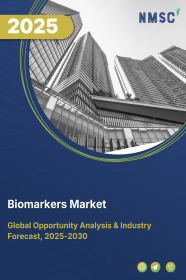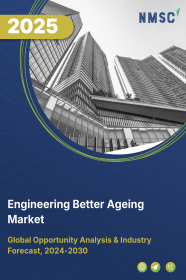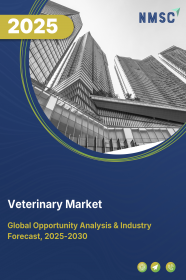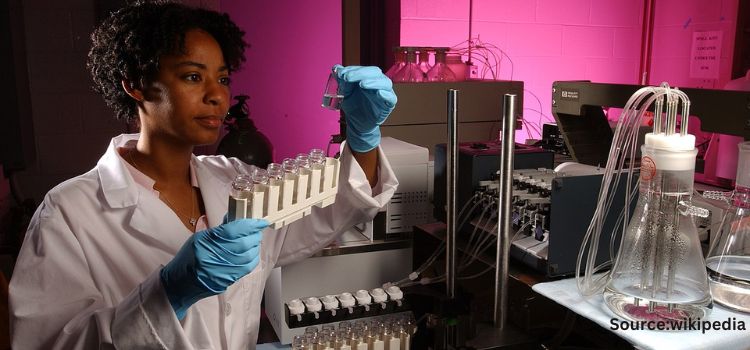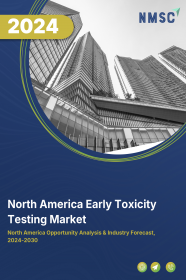
North America Early Toxicity Testing Market by Technique (In Vivo, In Vitro, and In Silico), by Toxicity Endpoint (Genotoxicity, Dermal Toxicity, Skin Toxicity, Ocular Toxicity, Phototoxicity, and Others), by End User (Pharmaceutical Industry, Cosmetic Industry, Chemical Industry, Food Industry, and Others) – Opportunity Analysis and Industry Forecast, 2023-2030
Industry: Healthcare | Publish Date: 03-Dec-2024 | No of Pages: 110 | No. of Tables: 96 | No. of Figures: 45 | Format: PDF | Report Code : HC727
US Tariff Impact on North America Early Toxicity Testing Market
Trump Tariffs Are Reshaping Global Business
Market Definition
North Early Toxicity Testing Market was valued at USD 2.48 billion in 2022, and is predicted to reach USD 4.30 billion by 2030, with a CAGR of 6.15% from 2023 to 2030.
Early toxicity testing is a process that involves evaluating the potential toxicity or adverse effects of drugs, chemicals, or other substances at an early stage of development, typically in vitro or in animal models, before they are tested in humans. The goal of early toxicity testing is to identify any potential safety concerns with a substance and determine whether it is safe to proceed with further development and testing.
Early toxicity testing helps to reduce the risk of harm to humans and animals during clinical trials and reduce cost and time of drug development. Early toxicity testing typically involves a range of tests and assays, such as cell viability assays, genotoxicity assays, and pharmacokinetic studies. Specific tests and methods used depend on the nature of substance being tested and intended use of the product. Early toxicity testing is an important step in drug development process that helps to ensure safety and efficacy of new drugs and other substances before they are approved for use in humans.
Prominent Pharmaceutical Landscape in North America Fuels Demand for Advanced Early Toxicity Testing Methods
The North American region comprises the United States, Canada, and Mexico, and it benefits from the significant presence of leading pharmaceutical firms. This substantial industry presence enables substantial investments in the advancement of novel drugs and treatments. As research and development efforts continue to expand within this area, there is a notable requirement for effective and trustworthy methods of conducting preliminary toxicity testing. These methods are crucial for detecting and resolving potential safety concerns prior to embarking on human trials.
For instance, the U.S. increased its medical and health research & development (R&D) spending to USD 245.1 billion in 2021, primarily for drug discovery and development for urgent medical needs such as cancer, neurodegenerative diseases, and rare genetic disorders.
Pioneering Personalized Medicine: A Catalyst for Advancing Early Toxicity Testing in North America
The North American healthcare landscape stands as a vibrant hub of innovation and progress, and a particularly compelling force driving this dynamism is the escalating demand for personalized medicine. Within this context, the burgeoning interest in tailored treatment options has not only redefined patient care but also become a central impetus propelling the growth of the early toxicity testing market. The region's distinctive position at the forefront of advancing healthcare practices, coupled with its fervent embrace of personalized medicine, underscores the intricate interplay between patient-centricity, scientific advancement, and the critical need for early toxicity testing to ensure optimal patient outcomes.
Regulatory Constraints and their Impact on Early Toxicity Testing Market Growth in North America
However, stringent regulations set by regulatory bodies such as the US FDA and the EMA require extensive and rigorous testing for drug development and safety, which can be time-consuming and expensive and restrain growth of the market. The complexity and cost of complying with these regulations can pose a significant challenge for small and medium-sized companies that may not have the resources to carry out extensive testing. As a result, some companies may choose to delay or abandon drug development projects, which can limit demand for early toxicity testing services. Moreover, stringent regulations can also result in a lengthy approval process for new drugs, further delaying the time it takes for drugs to reach the market. This, in turn, is expected to hamper growth of the market.
Technological Advancements in the field of Early Toxicity Testing Market in North America
Introduction of new technologies such as in-vitro modelling using 3D cell culture is expected to provide new lucrative opportunities for the early toxicity testing market during the forecast period. Use of 3D cell cultures can better mimic complexity of tissues and organs, providing more accurate and reliable results for toxicity testing. Traditional 2D cell culture models are limited in their ability to mimic complexity of human tissues and organs, often leading to inaccurate and unreliable results in toxicity testing. However, use of 3D cell culture models can better mimic structural and functional complexity of tissues and organs, providing more accurate and reliable results for toxicity testing. 3D cell cultures allow growth and interaction of multiple cell types, creating a microenvironment that more closely resembles human tissues and organs. This can better predict toxic effects of drugs and chemicals in the human body, reducing the risk of adverse effects in clinical trials. Hence, such factors propel the market growth.
Competitive Landscape
The North America Early Toxicity Testing industry includes several market players such as Inotiv Inc., Bio-Rad Laboratories Inc, Evotec A.G., Agilent Technologies Inc, Wuxi Apptec, Bruker, Perkinelmer Inc., Enzo Biochem Inc., Danaher Corporation, Eurofins Scientific SE, Charles River Laboratories International, Inc., Labcorp Drug Development., Promega Corporation, Insphero AG. and Thermo Fisher Scientific Inc.
Key Benefits
-
The North America Early Toxicity Testing market report provides a quantitative analysis of the current market and estimations through 2023-2030 that assists in identifying the prevailing market opportunities to capitalize on.
-
The study comprises a deep dive analysis of the market trend including the current and future trends for depicting the prevalent investment pockets in the market.
-
The information related to key drivers, restraints, and opportunities and their impact on the market is provided in the report.
-
The competitive analysis of the market players along with their market share in the North America Early Toxicity Testing market.
-
The SWOT analysis and Porter’s Five Forces model are elaborated in the study.
-
Value chain analysis in the market study provides a clear picture of the stakeholders’ roles.
North America Early Toxicity Testing Market Key Segments
By Technique
-
In Vivo
-
In Vitro
-
Cell Culture
-
PCR
-
ELISA
-
Western Blotting
-
Protein Binding Assays
-
-
In Silico
By Toxicity Endpoint
-
Genotoxicity
-
Dermal Toxicity
-
Skin Toxicity
-
Ocular Toxicity
-
Phototoxicity
-
Others
By End User
-
Pharmaceutical Industry
-
Cosmetic Industry
-
Chemical Industry
-
Food Industry
-
Others
By Geography
-
North America
-
U.S.
-
Canada
-
Mexico
-
REPORT SCOPE AND SEGMENTATION:
|
Parameters |
Details |
|
Market Size in 2022 |
USD 2.48 Billion |
|
Revenue Forecast in 2030 |
USD 4.30 Billion |
|
Growth Rate |
CAGR of 6.15% from 2023 to 2030 |
|
Analysis Period |
2022–2030 |
|
Base Year Considered |
2022 |
|
Forecast Period |
2023–2030 |
|
Market Size Estimation |
Billion (USD) |
|
Growth Factors |
The presence of major pharmaceutical companies.
The demand for personalized medicine. |
|
Countries Covered |
3 |
|
Companies Profiled |
15 |
|
Market Share |
Available for 15 companies |
|
Customization Scope |
Free customization (equivalent up to 80 working hours of analysts) after purchase. Addition or alteration to country, regional, and segment scope. |
|
Pricing and Purchase Options |
Avail customized purchase options to meet your exact research needs. |
Key Players
-
Inotiv Inc.
-
Bio-Rad Laboratories Inc
-
Evotec A.G.
-
Agilent Technologies Inc
-
Wuxi Apptec
-
Bruker
-
Perkinelmer Inc.
-
Enzo Biochem Inc.
-
Danaher Corporation
-
Eurofins Scientific SE
-
Charles River Laboratories International, Inc.
-
Labcorp Drug Development.
-
Promega Corporation
-
Insphero AG
-
Thermo Fisher Scientific Inc.

















 Speak to Our Analyst
Speak to Our Analyst



